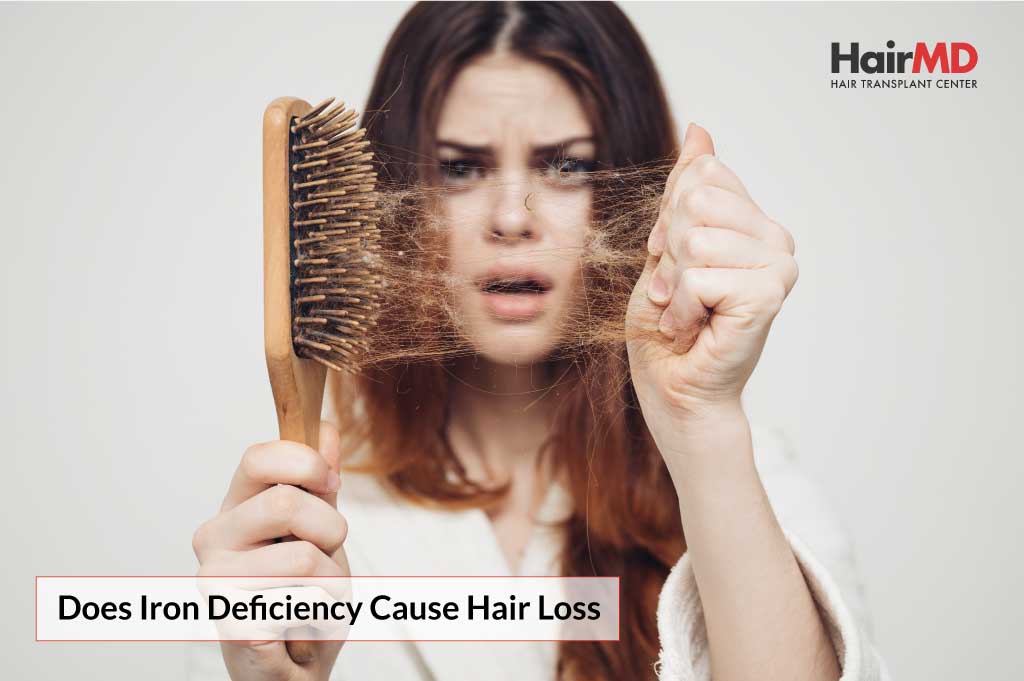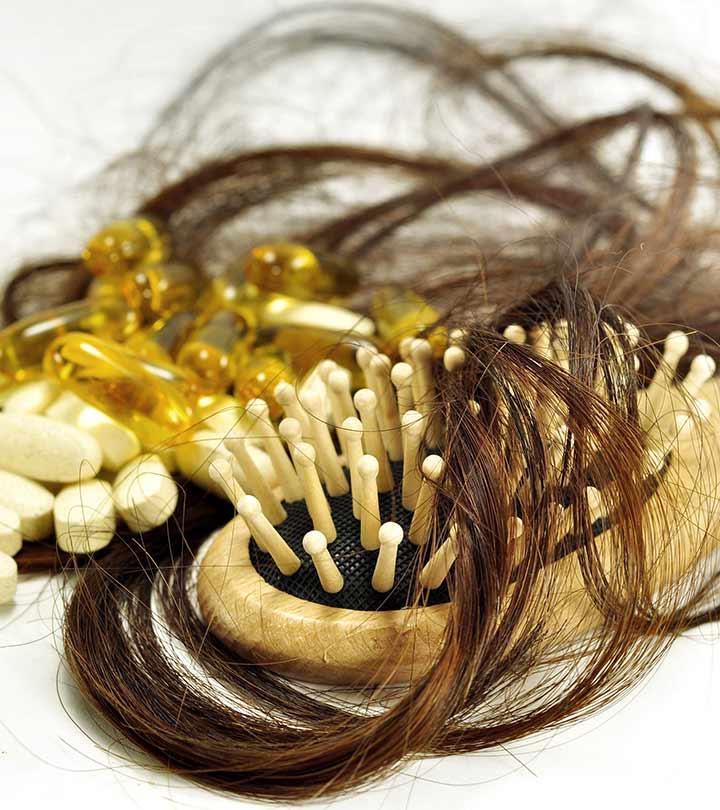
Additionally, lifestyle changes and stress management can help mitigate hair loss symptoms,' says Dr. Balwi. To elucidate the role of vitamin D in FPHL and TE, additional large-scale trials are necessary [77]. Management of alopecia is an essential aspect of clinical dermatology given the prevalence of hair loss and its significant impact on patients’ quality of life. Androgenetic alopecia (AGA), telogen effluvium (TE), and alopecia areata (AA) represent the three most common types of non-scarring alopecia [9]. There are several reasons to suspect a role for micronutrients in non-scarring alopecia. If you are eating a well-balanced diet, your body should be getting all the nutrients it needs, so you probably don’t need to take additional vitamins.
Vitamins & Supplements
Women miss iron shortage by mistaking signs as harmless conditions - MSN
Women miss iron shortage by mistaking signs as harmless conditions.
Posted: Sun, 28 Apr 2024 11:08:59 GMT [source]
Even at recommended doses, iron supplements can cause constipation. They can also cause more serious side effects, such as iron toxicity. Iron supplements are especially dangerous for people who have hemochromatosis, a condition characterized by iron overload. Your genes, hormonal changes, illness, and even stress can come into play.
Diagnosis of Iron Deficiency Anemia
That might sound positive for your hair, but consuming too much vitamin A can actually cause hair loss. Vitamin E helps support your immune system and other bodily functions. Hair loss and hair shedding can be a symptom of biotin deficiency.
Diet and Absorption
None of these studies supported an association between AA and iron deficiency [27, 44, 111–113]. However, if the doctor suspects anemia stems from gastrointestinal problems, they may recommend further tests and procedures, including upper and lower endoscopies. They may recommend increasing your intake of iron via your diet or taking supplements. Headaches may be a symptom of iron deficiency, although more research is needed on the connection between dopamine dysfunction, estrogen levels, and iron deficiency.
Harvard Health Ad Watch: New drug, old song, clever tagline
But if you don’t have a confirmed biotin deficiency, taking biotin supplements won’t help with hair loss. That’s surprising to many people since many companies sell shampoos and other products with biotin, claiming that they’ll improve hair health. Researchers have called for more double-blind placebo studies to examine the role of vitamin and mineral intake on hair loss.
Check if you have iron deficiency anaemia
Children and older adults share symptoms, but neurological symptoms, like ADHD, are more common in children. In the later stages of iron deficiency, the nails can become spoon-shaped, meaning that the middle of your nail dips and the edges raise to give a rounded appearance like a spoon. Spoon-shaped fingernails, also called koilonychia, are another symptom of iron deficiency anemia. People with iron deficiency anemia may have restless legs syndrome, which is a strong urge to move your legs while at rest. Consequently, iron deficiency may worsen conditions that affect your heart, such as heart failure and coronary heart disease. Since tiredness is often considered a part of a busy, modern life, it’s difficult to diagnose an iron deficiency based on this symptom alone.
What is anaemia?
A unique sign of iron deficiency is something called pica, which is an unexplainable craving for non-nutritious things like ice, clay, soil, or paper. Aspirin and other nonsteroidal anti-inflammatory drugs (NSAIDs) can cause internal gastrointestinal bleeding. Proton pump inhibitors, used to control acid reflux, can prevent your body from absorbing enough iron. Because these can also be symptoms of other conditions, see your doctor to get a diagnosis. According to the Mayo Clinic, normal ferritin rates are 20 to 200 nanograms per milliliter for women and 20 to 500 for men. If a food sensitivity is suspected, your doctor may recommend a blood test or an elimination diet.
These treatments that emit red- or near-infrared light are believed to stimulate hair follicles to help hair grow, with a lower risk of side effects compared to topical creams and oral medications. Doctors often prescribe oral medications to be used along with topical minoxidil because studies show the combination boosts hair production. Low-dose oral minoxidil (prescribed off-label) has been found to be effective and safe for most patients, Mirmirani says. Other oft-used drugs include finasteride (Propecia) and spironolactone.

This is promising for regrowth because it means that the follicles are not severely damaged and may be able to grow hair again. ‘Telogen effluvium is a type of hair loss resulting from the disruption of the hair growth phase. When more hairs are in the resting phase than in the growing phase, extensive hair shedding and sudden hair loss in women can occur. A 2022 study on in vitro (out of the body, typically using test tubes and similar equipment) human dermal papilla cells and mice found some potential positive effects from fish-derived collagen peptides. These findings suggest that fish-derived collagen peptides could, at some point, be used to promote hair growth, but more research is needed on humans to confirm this finding. Iron supplements can be particularly important for women and pregnant women, babies and young children.
It’s usually genetic, but it can also be triggered by diseases or disorders that attack the hair follicles. In pregnancy, iron deficiency anaemia is most often caused by a lack of iron in your diet. Your GP may carry out repeat blood tests over the next few months to check that your iron level is getting back to normal.
To prevent iron deficiency anemia in infants, feed your baby breast milk or iron-fortified formula for the first year. Cow's milk isn't a good source of iron for babies and isn't recommended for infants under 1 year. After age 6 months, start feeding your baby iron-fortified cereals or pureed meats at least twice a day to boost iron intake.
When the body does not have enough iron, it cannot produce enough haemoglobin, leading to a decrease in the number of red blood cells. Studies on the role of iron in AA have shown a discrepancy in the results between females and males. There is a need for placebo-controlled clinical trials evaluating iron supplementation in the treatment of AA. Most studies on zinc have revealed lower serum levels in AA patients than in controls. Biotin deficiency causes hair loss, but there are no evidence-based data that supplementing biotin promotes hair growth. Moreover, exogenous biotin interferes with some laboratory tests, creating false negative or false positive results.
In addition, Forghani et al. identified novel nonsense mutations in the VDR gene in two patients that resulted in hereditary vitamin D-resistant rickets and alopecia [65]. In a case documented in 1979, a 28-year-old woman undergoing renal dialysis noticed sudden hair loss. Further investigation revealed that she had been taking a daily vitamin A supplement (5000 IU) and that her vitamin A serum levels were well above normal (140 μg/dL).
If this indicates a deficiency, it’s worth going to your GP for a full blood count which includes haemoglobin and other red blood cell measurements. This study owns its value because it demonstrates the first direct comparison between hair loss patients and same number of healthy controls matched by age and sex. It strongly supports the previous studies that ID can be a certain factor of developing or worsening FPHL especially in premenopausal female patients. However, screening for ID as the first evaluation of hair loss in even male patients might be worthwhile in the clinical field. The recommended dietary allowance for selenium is 55 μg daily for individuals aged ≥ 14 years in U.S. populations. The availability of selenium in a variety of foods, such as meat, vegetables, and nuts, are sufficient to meet the daily requirement [120].
For people who prefer to get nutrients from plant-based sources, legumes and leafy greens like kale, broccoli, and collards are a great way to get iron. You’ll also find grocery store shelves lined with iron-fortified foods, including cereal, bread, and pasta. You’ve probably heard of iron deficiency––or maybe even had it yourself.
Indeed, people with iron deficiency anemia are six times more likely to have restless leg syndrome than the general population. A sore, swollen, or strangely smooth tongue may be a sign of iron deficiency anemia, as are cracks on the corners of your mouth. In cases of iron deficiency, your heart has to work especially hard to transport oxygen.

No comments:
Post a Comment